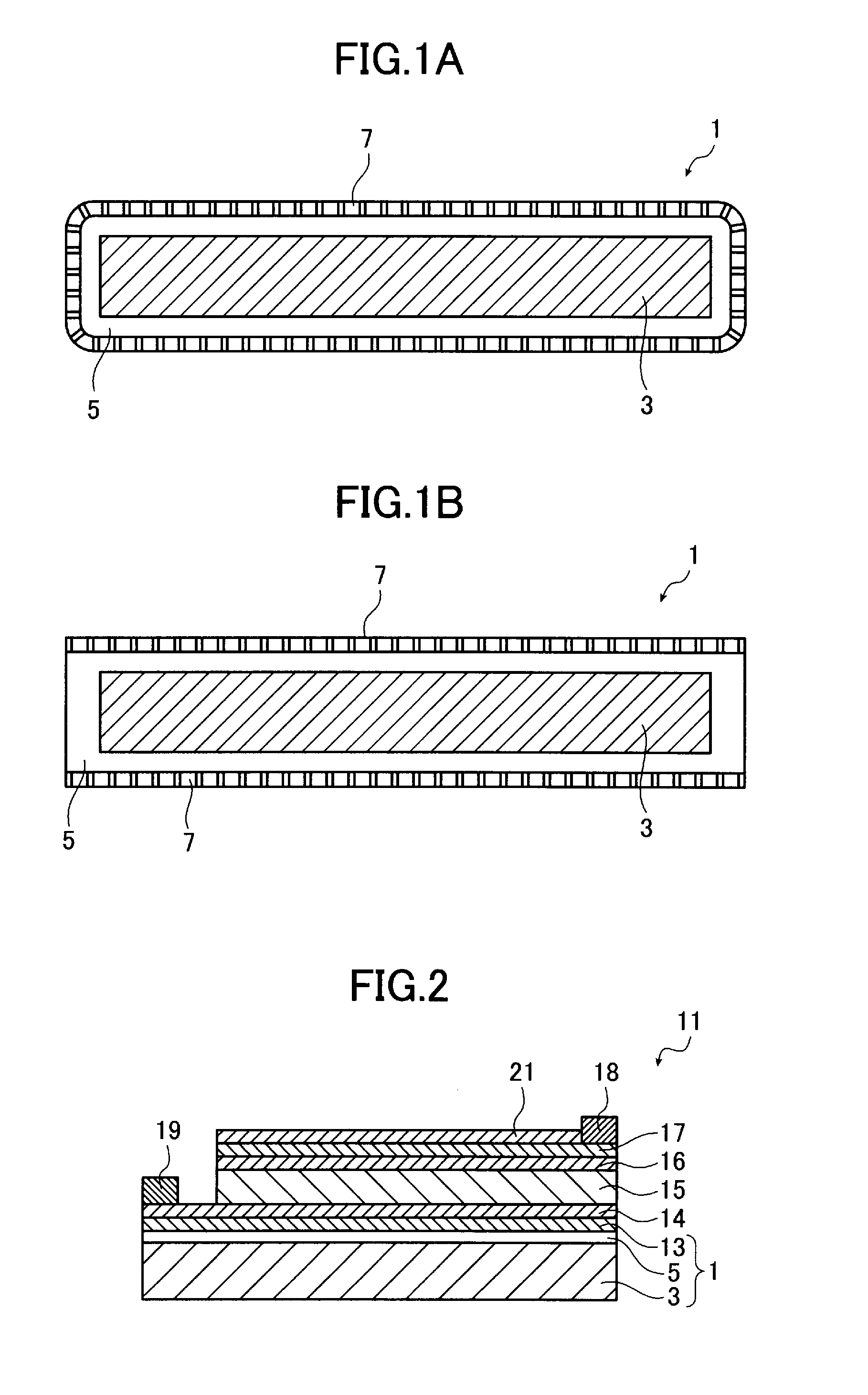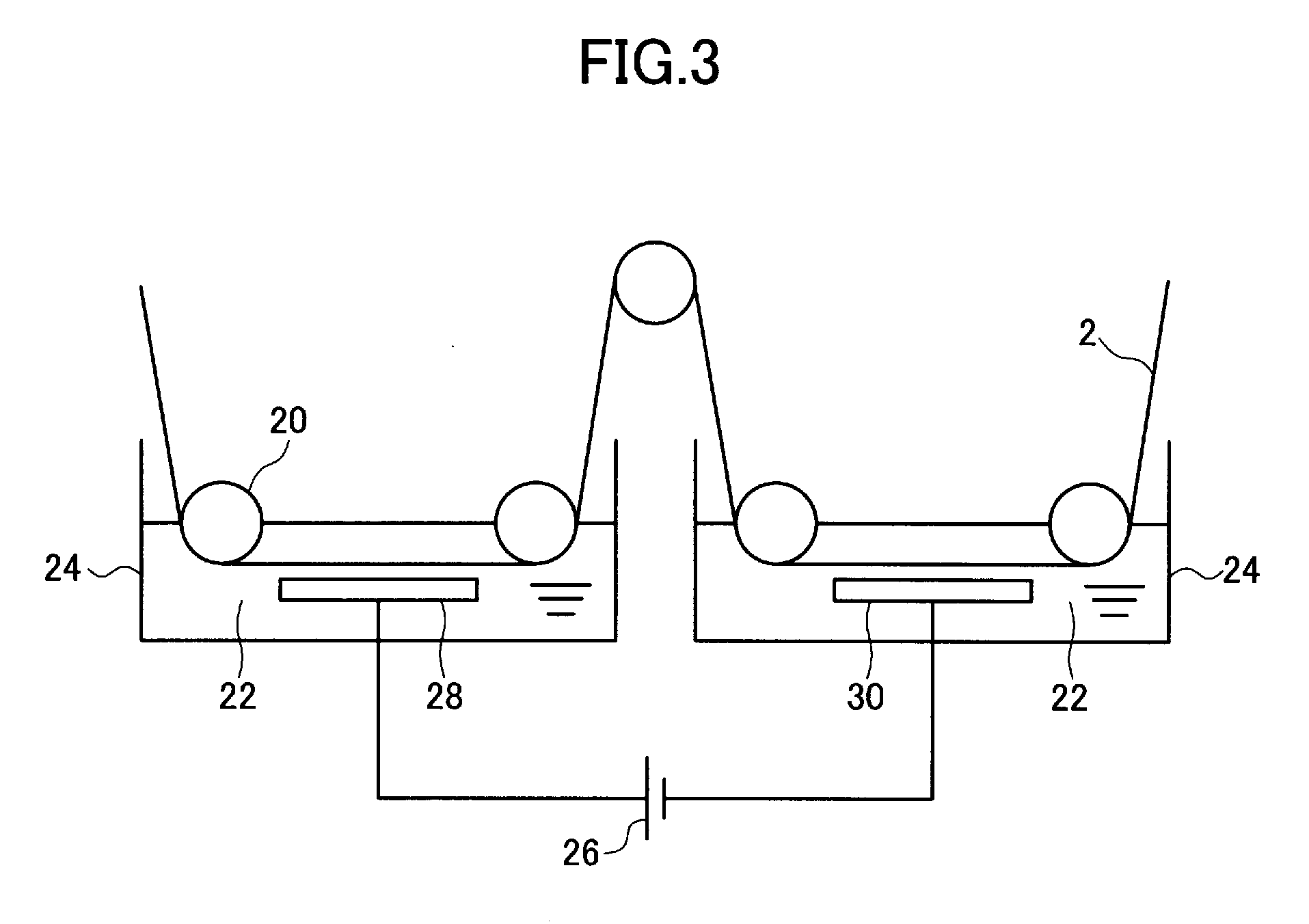Metal composite substrate and method of producing the same
a composite substrate and metal technology, applied in the direction of superimposed coating process, semiconductor/solid-state device details, transportation and packaging, etc., can solve the problems of difficult handling at high temperatures, difficult to dispose of such glass substrates in a curved shape, and difficult to achieve consistent production, good flatness, and high efficiency
- Summary
- Abstract
- Description
- Claims
- Application Information
AI Technical Summary
Benefits of technology
Problems solved by technology
Method used
Image
Examples
examples
[0092]The present invention is described below by way of examples and comparative examples. However, the present invention should not be construed as being limited to the following examples. Unless otherwise specified, the percentages shown in Examples are expressed by weight.
[0093]Metallic materials (a stainless steel and steels) with a thickness of 100 μm were used for the core and the core was entirely coated with an aluminum alloy (aluminum purity: 99.9%) to a thickness of 70 μm by hot dipping.
[0094]As shown in Table 1, a stainless steel SUS304 was used for the cores in Examples 1 and 2, a heat resisting steel SUH309 for the cores in Examples 3 and 4, and a mild steel SS400 for the cores in Examples 5 and 6. The cores were passed through molten aluminum with an aluminum purity of 99.9% to which no elements were added, thereby forming composite materials with a thickness of 240 μm.
[0095]For comparison, an aluminum alloy, a stainless steel, a heat resisting steel and a mild steel ...
PUM
| Property | Measurement | Unit |
|---|---|---|
| temperatures | aaaaa | aaaaa |
| thickness | aaaaa | aaaaa |
| thickness | aaaaa | aaaaa |
Abstract
Description
Claims
Application Information
 Login to View More
Login to View More - R&D
- Intellectual Property
- Life Sciences
- Materials
- Tech Scout
- Unparalleled Data Quality
- Higher Quality Content
- 60% Fewer Hallucinations
Browse by: Latest US Patents, China's latest patents, Technical Efficacy Thesaurus, Application Domain, Technology Topic, Popular Technical Reports.
© 2025 PatSnap. All rights reserved.Legal|Privacy policy|Modern Slavery Act Transparency Statement|Sitemap|About US| Contact US: help@patsnap.com



